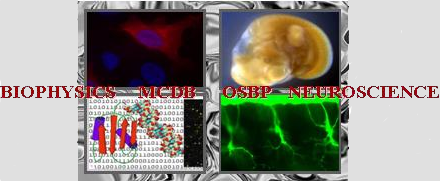Poster abstracts
Poster number 109 submitted by Connor Weyrick
Investigating how helix orientation affects the sequence-fitness relationship of helical bundle protein domains
Connor T. Weyrick (Department of Chemistry and Biochemistry), Charu Jain (Department of Chemistry and Biochemistry), Thomas J. Magliery (Department of Chemistry and Biochemistry)
Abstract:
Understanding how protein sequence changes impact structural stability and biological function is critical for advancing the design of proteins for a variety of applications. Many natural and de novo designed alpha helical proteins adopt compact bundle structures. The orientations of the helices and the lengths of the connecting segments in the bundles are highly variable, making it difficult to predict the consequences of altering the amino acid sequences. The characterization of a large number of helical bundle variants is therefore needed to establish general trends in their sequence-fitness relationship. Rop (repressor of primer) and the DNA binding domain of Cra (catabolite repressor/activator) are two bacterial helical bundle proteins. The four helices in Rop are arranged in an anti-parallel manner and the three helices in Cra are instead oriented perpendicular with respect to one another. The two proteins serve as simple models to investigate amino acid preferences in the core, surface, and connecting segments of different helical bundle structures. We have developed and validated cell-based directed evolution selection techniques that can rapidly analyze large variant libraries for Rop and Cra to identify fitness-impairing and fitness-enhancing mutations. The selection techniques were applied to deep mutational scanning libraries of Rop and Cra to calculate the fitness of every possible single point mutant for both proteins. The trends in fitness between the two proteins were compared to establish differences in mutational preferences for helical bundles with anti-parallel versus perpendicular orientations. The information will advance our ability to identify mutations that improve biophysical and pharmacological properties of designed proteins for healthcare, agriculture, and manufacturing purposes.
Keywords: protein engineering, protein design, directed evolution
